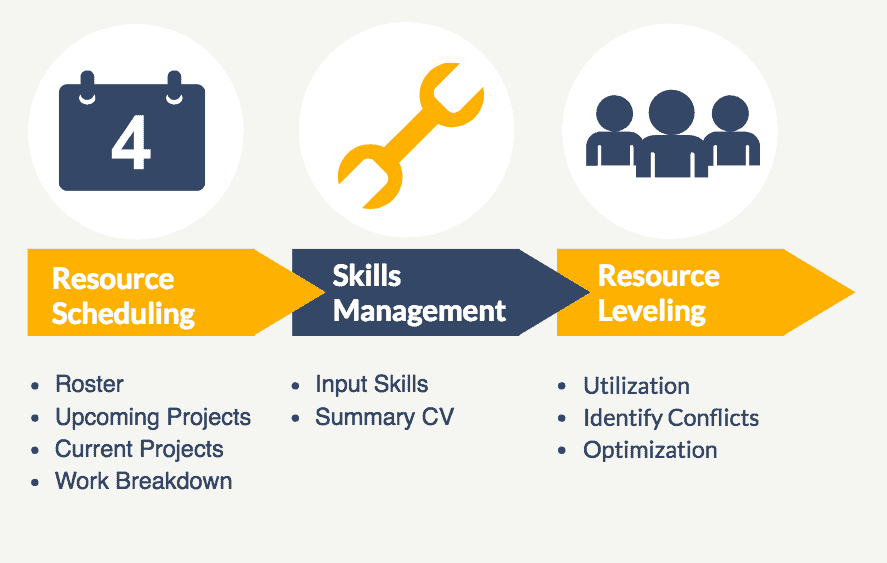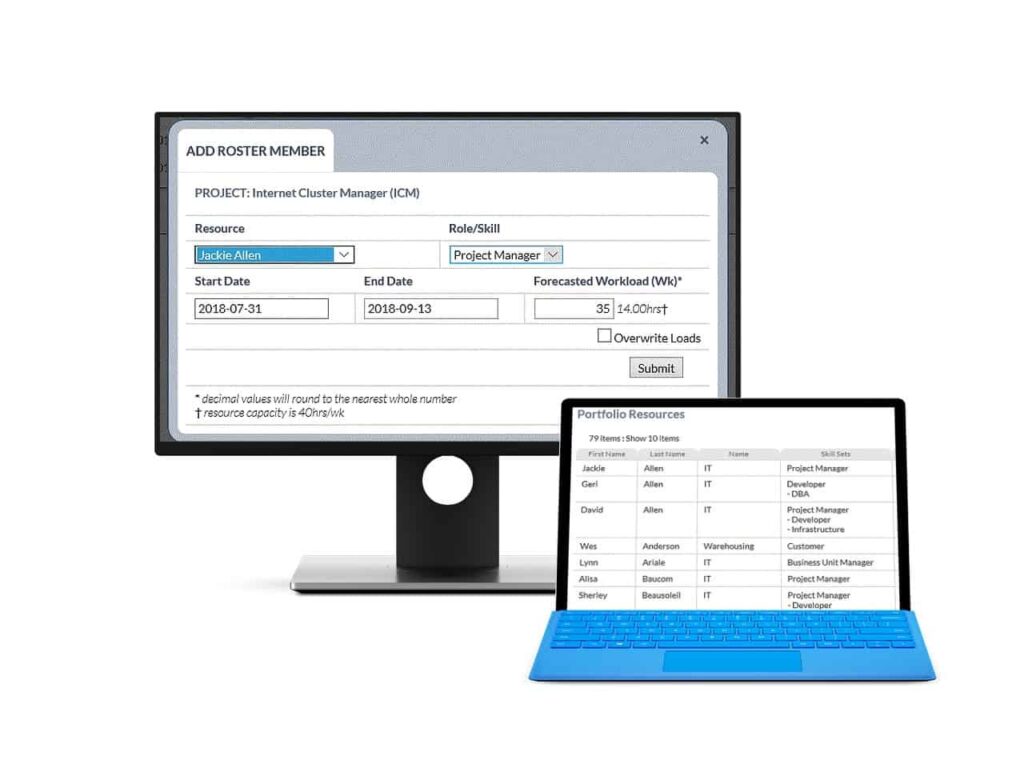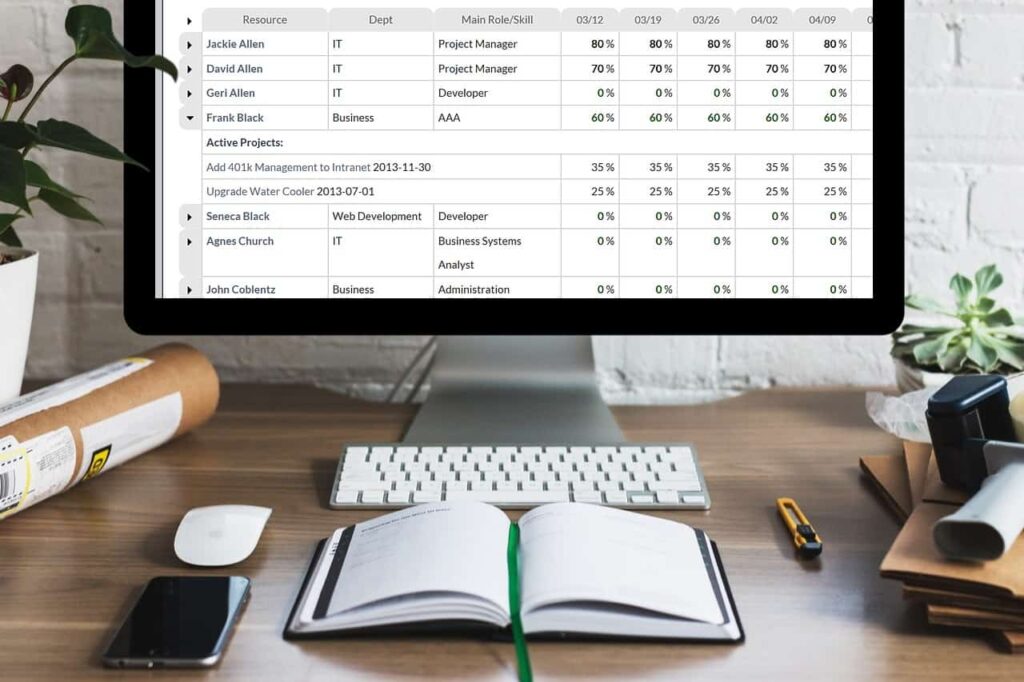Quick Take
- Effective Resource Management is essential to maximize the use of project personnel
- Project Portfolio Management (PPM) uses a top-down approach to efficient resource allocation
- PPM can optimize deployment of personnel via effective Resource Scheduling, Skills Management, and Resource Leveling
- PPM enables you to visualize utilization and assignment across the entire portfolio
- You also can more easily match your team’s skills with your project’s requirements
- Resource Leveling enables you to consider utilization/load, and skills while looking ahead for future scheduling needs
Resource Management is Key to Effective Projects
Resource Management means efficiently and effectively using your organization’s budget, inventory, personnel, and information technology (IT). While there are many kinds of resources necessary for projects, in this post, the term “resource” refers to one of the most critical project resources: personnel.
It’s imperative for organizations to be able to not only assign the right human resources to each of your projects, but to also be able to find, schedule, manage, and track these resources. PPM software is essential for effective Resource Management.
The Resource Management process begins after initiatives are prioritized or selected. The next step is to assign the right resources to the right projects. Critical to this step is the ability to have visibility into current and projected project resource demand. Once that picture is clear, you can evaluate current resources and determine whether head count is sufficient or if you need to hire.
PPM enables you to determine resource allocation using a top-down approach—either at the portfolio or organizational level. Top-down resource planning involves doing your resource estimates at the beginning of the project cycle. PPM software can provide real-time resource data and enable you to easily and effectively perform tasks such as assigning resource availability, aligning skills to projects, and resource leveling.
Increased visibility enables proactive management of resource schedules, which enables you to identify potential issues weeks or months in advance.
There are three important ways that Project Portfolio Management optimizes deployment of personnel:
- Resource Scheduling
- Skills Management
- Resource Leveling

Resource Scheduling
Resource scheduling assigns a person to a project, and is typically a built-in capability of a Project Portfolio Management tool.
PPM software enables you to visualize utilization and assignment across the entire portfolio, viewing resources by project and by resource. This aggregate view helps you identify key projects, skills, people and timelines.
You can also perform “what-if?” analyses by assigning individuals or roles to projects that are not yet active.
Determine the optimal deployment of resources by:
- Identifying high value projects (by their score)
- Identifying projects that are not yet active (workflow status)
- Assigning resources
To accomplish these tasks, your PPM must be able to score or otherwise prioritize your project. (See our post, How To Implement An Effective Project Prioritization Methodology.) You also need to be able to see into the future by evaluating projects in your pipeline and their resource demands.
In order to implement a robust scheduling process, begin with a list of all resources (“roster”) and a list of all upcoming and current projects. Create a detailed project management plan or a work breakdown structure to identify the exact times and dates that personnel need to be assigned to the initiative.

Of course, assigning resources to projects is not quite that easy. To effectively staff projects, you need to have resources that have the proper skills for the work to be done.
Skills Management
Skills management is matching your team’s skills with your project’s requirements. Understanding the skills required for a given task or milestone is a necessity. Your PPM software should be able to generate a list of skills required for a project as part of your project intake process.
Your Project Portfolio Management software then can provide a roster of personnel available to work on your projects. Roster data will include a mini CV (Curriculum Vitae or resume) of each individual and their skills. Thus you can match resources to projects so that proper talents are best applied.
But you’re still not done. You need to ensure your resources are available at the right time during your projects and are not overloaded.
Resource Leveling
Resource Leveling methods adjust project timelines and fine-tune utilization of personnel. Resource leveling allows the maneuvering of personnel among many projects by considering utilization/load and skills while looking ahead for future scheduling needs. Resource leveling is necessary because timelines change, resources become unavailable, and new projects begin that overlap with current dates.
Methods of leveling provided by your PPM software can enable you to reassign a portion of the work based on skill-set and adjust deadlines to accommodate the schedule of key personnel.
A PPM solution removes the manual effort and angst of Resource Leveling manually via a spreadsheet.

Critical Path is a leveling process that takes into account resource availability and determines the most efficient way to predict the length of the project. Typically, this is the desired leveling process. But things can change. You might need to fast track a project by concentrating only on critical path tasks. Or you might need to crash the project by assigning more resources. Both these processes add to the risk of the project and the likelihood of rework or missing targets.
Summary
Resource Management can ensure that the right projects are assigned to the right people thereby increasing the chances of project (and portfolio) success. Key to success in managing resources is a robust Project Portfolio Management. solution. To learn more about the additional benefits that PPM software can deliver please see our “Definitive Guide to Project Portfolio Management.”

